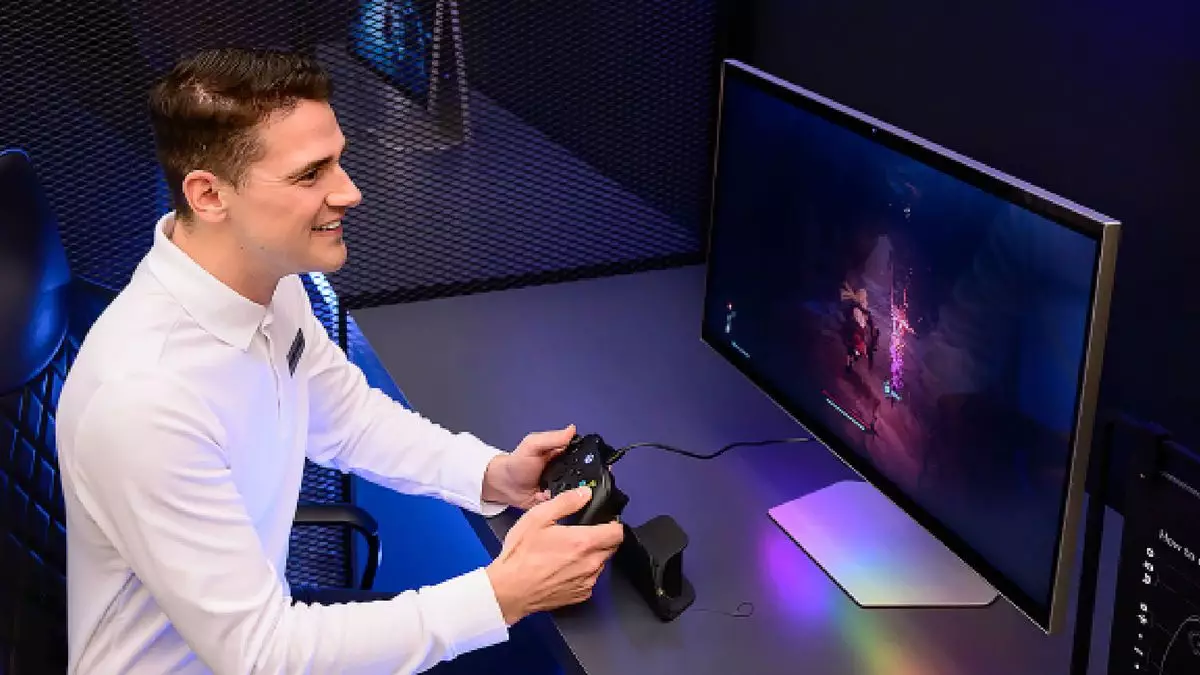For years, the dream of experiencing cinema and gaming in three dimensions without cumbersome glasses has been seductively dangled in front of us, only to be met with mixed results. Those of us who recall the hype surrounding 3D movies during the mid-2000s can’t help but feel a sense of déjà vu as companies once again venture into the realm of glasses-free 3D gaming. The recent announcement from Samsung indicates a significant step in this ongoing saga, marking a partnership with Nexon Korea and Neople to launch the anticipated game, *The First Berserker: Khazan*. The focus here is not merely on graphical flair, but on creating a layered and immersive gaming environment that responds dynamically to player engagement.
This new endeavor leverages Samsung’s cutting-edge Odyssey 3D monitor, which is poised to make waves in the gaming community. Notably, the device employs advanced technology principles—including a front-mounted lenticular lens and eye-tracking capabilities—to manipulate light and create a viewing experience that purportedly doesn’t require the typical 3D glasses. The proactive adjustment of focal distances allows developers to tailor scenarios that dictate when and how depth is perceived, enhancing gameplay during pivotal moments such as boss battles and cinematic sequences.
But does it promise to change the way we play games, or is it merely another technological novelty that falls flat? While many enthusiasts are bubbling with excitement, others remain skeptical. The history of 3D technology shows us that while early implementations often promised greatness, they frequently stumbled, leading to frustrated consumers and abandoned projects.
The underlying technology is undeniably fascinating. By employing a light field display, the Odyssey 3D monitor aims to deceive the human brain into perceiving depth through the manipulation of light’s direction. This technique is reminiscent of the long-standing but failed magic eye puzzles that often confused more than they captivated. Despite advancements, glasses-free 3D has failed to deliver for many users—myself included. The complex interaction between our eyes, the display, and how our brains interpret these cues can be elusive. Perhaps my dual struggles—navigating the erratic perceptions of visual depth while trying to enjoy the nuances of gaming—are not unique.
Unquestionably, the promise of this technology continues to drive innovation, but there is still a long road ahead. The Odyssey 3D monitor’s capabilities are still emerging and have, so far, only demonstrated their utility in specific contexts, such as full-screen videos. If customized 3D gaming experiences are the next goal, a sustained commitment to expanding content offerings is imperative. Competing brands, like Acer with its SpatialLabs initiative, already showcase the vibrant potential of tailored 3D experiences, raising the stakes further for Samsung.
Keeping an eye on the unfolding landscape, the visual capacity displayed in *The First Berserker: Khazan* could serve as an inflection point for 3D gaming as a whole. As gamers, we yearn for the evolution of technology to elevate our entertainment experiences. However, history reminds us that anticipation alone, without a robust framework of successful applications, can ultimately lead to disappointment.
Could Samsung indeed catapult glasses-free 3D into the mainstream? It may very well depend on their ability to deliver a seamless integration of this technology within a gaming ecosystem. Successful execution relies not only on technical prowess but also on how well this new medium resonates with players in a practical, lasting manner.
In a world where virtual reality (VR) continues an upward trajectory, one must evaluate whether the era of traditional 3D gaming as we once imagined is nearing its revival—or if we’re merely grasping at shadows of what could have been. Whether Samsung’s latest endeavors yield success remains uncertain, but one thing is clear: the excitement surrounding glasses-free gaming endures, generating fresh conversations about the potential symbiosis of innovative technology and immersive play.
In the grand spectrum of technological evolution, it’s possible that we may soon witness a pivotal shift as innovation converges towards genuinely interactive experiences. While skepticism is warranted, it’s equally essential to embrace the dream of a revitalized gaming realm—whether our vision is ultimately realized or remains a dream just out of reach.


Leave a Reply